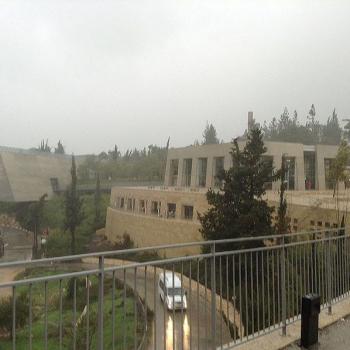
(Wikimedia Commons public domain image)
Will religious universities continue to be permitted to set their own behavioral standards for students (and, for that matter, for faculty and administrators) if those standards conflict with Western society’s rising orthodoxy on gender and sexuality? Should they be permitted to do so? New York City’s Yeshiva University, an Orthodox Jewish institution, has recently become a battleground for different viewpoints on that question.
A Catholic perspective: “Religious Liberty Must Prevail for Yeshiva University”
Forward (implicitly taking a rather different position, a Jewish publication mentions Brigham Young University): “As Pride club takes on Yeshiva University, LGBTQ students at other religious colleges take notice: Two other LGBTQ discrimination lawsuits are moving through the courts”
National Review: “Federal Court Rules for Catholic School That Fired Teacher in Same-Sex Union”
On a possibly related matter, here’s a recent ten-minute video-news segment that you might find of interest:

I think that I’ve neglected to mention here the tenth-birthday party that the Interpreter Foundation threw for itself back on Saturday, 17 September 2022. Thanks to the kind sponsorship of our neighbors Dr. Lynn Dayton and former Utah state senator Margaret Dayton, who are both supporters of Interpreter and members there, we were able to hold it at Provo’s beautiful Riverside Country Club. We had a small dinner with members of the Interpreter board, major donors, and certain invited volunteers — we wanted to provide dinner for everybody in attendance that evening, as we have done at our previous nine birthday parties (and as we intend to do at such celebrations in the future), but the expense proved too high (and I proved much too cheap) for us to be able to do that. Afterwards, we moved upstairs for remarks by Elder Robert C. Gay, who became an emeritus General Authority in October 2021 after service (among other things) as a member of the presidency of the Seventy and who has been a friend of the Interpreter Foundation since very shortly after its launch in 2012. (His comments were very kind and generous.) We also shared an eighteen-minute presentation in which we thanked our volunteers, sketched a retrospective of past undertakings, and shared a glimpse of future projects. And, of course, there was music. Background piano music was provided by Eileen Snow, Lincoln Highway furnished acoustic and bluegrass music, and Rex Kocherhans sang the original version of “A Poor Wayfaring Man of Grief” (that is, to the tune that John Taylor sang in the jail in Carthage, Illinois, just prior to the assassination of Joseph Smith and Hyrum Smith in June 1844). And then, it should scarcely require saying, we all enjoyed dessert and conversation.

© Samuel Wantman / Wikimedia Commons / CC BY-SA 3.0 & GFDL
We spent the day in and around St. John and St. Martins, in New Brunswick, Canada — basically along the famous Bay of Fundy with its remarkable tidal variation. I’ve heard about it all my life, and now have finally seen it. We actually saw the water at “Reversal Falls” flowing one way in the morning and the other way in the afternoon, and we observed the enormous drop in the water at St. Martins, with its boats high up out of the water at low tide. Remarkable.

© Samuel Wantman / Wikimedia Commons / CC BY-SA 3.0 & GFDL
Finally, I share a couple of horrors from the apparently inexhaustible and certainly ever-chilling Christopher Hitchens Memorial “How Religion Poisons Everything” File©:
Between them, Alexander Moreira-Almeida, Francisco Lotufo Neto, and Harold G. Koenig are affiliated with the Center for the Study of Religious and Spiritual Problems (NEPER), Department of Psychiatry, Universidade de São Paulo (USP), SãoPaulo (SP), Brazil; João Evangelista Hospital, São Paulo (SP), Brazil; the Department of Psychiatry and Behavioral Sciences, Duke University Medical Center, in Durham, North Carolina; and the Geriatric Research, Education, and Clinical Center, VA Medical Center, Durham, North Carolina.
Posted from St. John, New Brunswick, Canada












